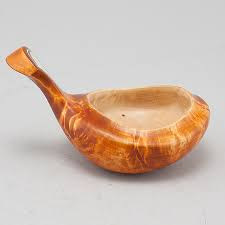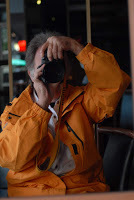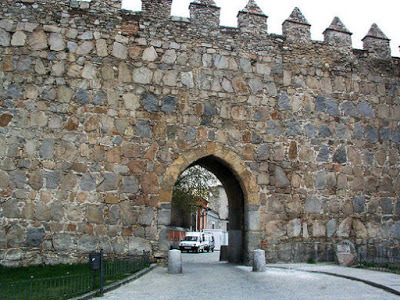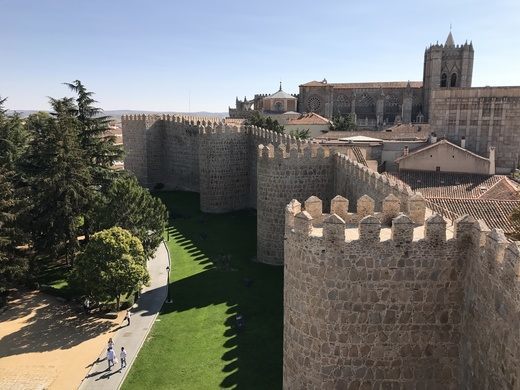Clancy Tucker's Blog, page 125
February 19, 2019
20 February 2019 - STUNNING PHOTOGRAPHY

STUNNING PHOTOGRAPHY
G'day folks,
Time to check out some great shots taken by photographers around the world.











Clancy's comment: Well done. Thank you.
I'm ...


Published on February 19, 2019 12:15
February 18, 2019
19 February 2019 - GUKSI – SCANDINAVIAN WOODEN CUPS MADE FROM BIRCH TREE BURLS

- GUKSI -SCANDINAVIAN WOODEN CUPS MADE FROM BIRCH TREE BURLS
G'day folks,
These beautiful wooden cups are traditionally carved from birch tree burls.
If welcomed into a Sámi home in northern Finland or Sweden, a lucky guest might find their mittened palm wrapped around the smooth, wooden handle of a guksi that’s been filled to the brim with piping hot coffee and a few chunks of cheese. Also called kuksa (Finnish) or kåsa(Swedish), the beautiful wooden mugs are made from the surrounding wilderness and were once an essential tool for living off the local arctic and subarctic environment.

The Sámi are an indigenous group that have lived in the northern parts of what is now Scandinavia for thousands of years. As nomads, they lived off the local forests and lands, hunting, fishing, herding reindeer, and creating essential household items from the materials at hand. Guksi are part the Sámi culture of duodji, or handicraft. These crafts combine art with function and make use of the local flora and fauna, especially bones, antlers, wool, horns, wood, bark, roots, and animal hides. A master crafter, or duojár, is a respected member of the community and plays a key role in passing down the knowledge of duodji.

Guksi are made from the bulbous protrusions, known as burls, of local birch trees. These wood growths occur when a tree has been stressed (by insects, bacteria, etc.), creating a complex interior pattern that is both beautiful and rare. Ideal for their round shape, burls are severed from a tree, carved out to form a basin, and smoothed, revealing fine natural wood grain patterns swirling around the interior. To make the vessel even more exquisite, some artists inlay the carefully carved handles with carved pieces of ivory-hued reindeer antler.

Because they’re made of wood, guksi provide excellent insulation for hot beverages while their wide bases make for stable-bottomed vessels. Although the shape can be found in modern plastic and ceramic versions, authentic wooden guksi remain a proud part of Sámi heritage and those who make them are highly respected craftspeople.


Clancy's comment: Yet, another practical item made by smart people.
I'm ...


Published on February 18, 2019 12:14
February 17, 2019
18 February 2019 - A COLLECTION OF GREAT QUOTES

A COLLECTION OF GREAT QUOTES
G'day folks,
Yep, it's time to read some wise quotes to get you cranked up for the day.












Clancy's comment: I hope some of these did the trick. Send them onto others who might need them.
I'm ...


Published on February 17, 2019 13:01
February 16, 2019
17 February 2019 - RARE PHOTOGRAPHS FROM THE PAST

RARE PHOTOGRAPHS FROM THE PAST
G'day folks,
I'm always curious about our past. Oh, the past. That magical time we keep hearing about, when things used to be better and people were happier. But turns out that the past had its quirks, too. In fact, it was quite a weird time to live in, before the advancement of medicine and technology, and when socially acceptable behaviors were… A bit different.
The photographers who took these photos probably never realized their significance, but you’ll be shocked to see some of the things that people did in recent history. Here is a rare and fascinating look at how weird life used to be.











Clancy's comment: The times they are a changing, eh?
I'm ...


Published on February 16, 2019 13:11
February 15, 2019
16 February 2019 - Trends Among The World's Poorest Countries

Trends Among The World's Poorest Countries
G'day folks,
I'm always hearing about population, borders, refugees, and asylum seekers. However, these facts might enlighten you.
Since 1970, there has been encouraging news emerging from developing countries. According to the UN's 2011 Human Development Report, life expectancy in developing countries had increased from 59 years in 1970 to 70 years in 2010. School enrollment climbed from 55% to 70% of all primary and secondary school-age children. Also, in the last forty years, per capita GDP doubled to more than ten thousand U.S. dollars.

The World's average Human Development Index (HDI), which combines information on life expectancy, schooling and income, has increased 19% since 1990 (and 41% since 1970). This reflects large improvements in life expectancy, school enrollment, literacy, and income. Almost every country has benefited from this progress. Only three countries had a lower HDI in 2010 than in 1970. Those three countries were Zimbabwe, Zambia, and the Democratic Republic of the Congo.
Poor countries are catching up with the wealthier countries, but not all countries made fast progress. For example, the countries in Sub-Saharan Africa have progressed slowly, largely due to the HIV epidemic. Countries in the former Soviet Union have been held back by an increase in adult mortality.

To illustrate the income inequality between rich and poor countries, consider these facts: about 1.75 billion people live in multi-dimensional poverty, meaning extreme deprivation in education, health, and standard of living; 1.44 billion people out of the developing world's 6.9 billion people live on $1.25 per day; 2.6 billion people are estimated to be living on less than $2 a day. Multidimensional poverty varies by region from three percent in Europe and Central Asia to 65% in Sub-Saharan Africa.

Clancy's comment: Yep, I call Australia 'The Lucky Country' for a good reason. I was lucky enough to be born here. Having said that, I've traveled to many countries, lived in some of them, and loved being there for a variety of reasons. Money spent on travel is money never wasted. Amen.
I'm ...


Published on February 15, 2019 12:00
February 13, 2019
15 February 2019 - YAEL EYTAN - GUEST AUTHOR

YAEL EYTAN - GUEST AUTHOR -
G'day folks,
Today, I interview an up and coming author from Australia.
Welcome, Yael ...
1. TELL US A LITTLE ABOUT YOURSELF AND YOUR WRITING JOURNEY.
I have always written. Ever since I remember I have had an overactive imagination. Often it ended up as a wild game that continued on for months with my siblings. We would go on endless adventures. And the rest of the time it would end up in notes and note bokes, on random pieces of papers and sometimes on skin. Ideas fleeting sentences, thoughts. I still do this. I collect words and sentences and every now and then a few come together to create the perfect sentence or idea.
2. WHAT TYPE OF PREPARATION DO YOU DO FOR A MANUSCRIPT? DO YOU PLAN EVERYTHING FIRST OR JUST SHOOT FROM THE HIP?
I sit and I write and hope the words come. I have a pretty good idea where the story is going and how it will get there when I get started. Sometimes when I finish it resembles this first idea and other times it’s its own creation.
3. WHAT DO YOU ENJOY MOST ABOUT BEING A WRITER?
That moment when a spark of inspiration ignites and you know you’re on to something and your fingers start to itch and all the conversation around you starts to dim and all you want is a way to get words on paper and let the ideas spring to life.
4. WHAT IS THE HARDEST THING ABOUT BEING A WRITER?
Editing. Arduous and endless. Going back over a single sentence hundreds of times questioning each word, syllable, punctuation mark.

5. WHAT WERE YOU IN A PAST LIFE, BEFORE YOU BECAME A WRITER?
I have worn many hats over the years. I have worked as a chef, a restaurant manager, a massage therapist, a PT and fitness instructor and I have owned online businesses.
6. WHAT IS YOUR GREATEST WRITING ACHIEVEMENT?
Having my debut novel picked up and published, but more so, loved.
7. WHAT ARE YOU WORKING ON AT THE MOMENT?
I am currently working on three different projects each with their own themes. Two are dystopian and question the value of family, nature vs nurture and sex vs love. While the other is a thriller that discusses the idea of happiness, and how it is perceived by different people.
8. WHAT INSPIRES YOU?
Everything. Conversations, music, nature, my own feeling and moods.

9. WHAT GENRE DO YOU WRITE?
Speculative fiction disguised as romance and lately thrillers.
10. DO YOU HAVE ANY TIPS FOR NEW WRITERS?
Just sit down and write. Finish that first draft, don’t worry about editing as you go or perfection, just finish first. Make sure you celebrate that first finish, and all the ones that follow, because each of your pieces is just as important, as valuable and as taxing as the one before.
11. DO YOU SUFFER FROM WRITER’S BLOCK?
Yes, I do. I find that when I give myself deadlines or overload my plate, I just can’t seem to construct sentences.
12. DO YOU HAVE A PREFERRED WRITING SCHEDULE?
I wish I could write in daylight hours, but with kids at home, I tend to wait until the household is asleep and write at night. I try to write at least an hour every day and I don’t guilt myself into writing or force it if I don’t feel like it. Sometimes inspiration strikes when I least expect it and then I use dictation to remember ideas which I then write about at night.
13. DO YOU HAVE A FAVOURITE WRITING PLACE?
I write at my desk at home. I enjoy the peace.
14. WHAT IS YOUR GREATEST JOY IN WRITING?
When you manage to translate the jumble of ideas floating into your head into coherent sentences that make complete sense and are eloquent and well written.
15. WHO IS YOUR FAVOURITE AUTHOR AND WHY?
Alexander Dumas. He is an incredible story teller. His stories are intricate and brilliant.

16. WRITERS ARE SOMETIMES INFLUENCED BY THINGS THAT HAPPEN IN THEIR OWN LIVES. ARE YOU?
Always. My moods, emotions, my friends, random conversations, the country I find myself in, current affairs…. It all plays a part.
17. OTHER THAN WRITING, WHAT ELSE DO YOU LOVE?
Reading, swimming, hiking, traveling.
18. DID YOU HAVE YOUR BOOK / BOOKS PROFESSIONALLY EDITED BEFORE PUBLICATION?
Yes. Personally, I think it’s a must.
19. DESCRIBE YOUR PERFECT DAY.
Wake up late. Have a hot uninterrupted coffee and a long hotter shower. Sit on the beach, where only a light breeze cools the air, the water temperature is in the mid-twenties so swimming is enjoyable. A few cocktails while I read uninterrupted. Dinner with the family and some dancing and drinks with friends. Return to the seashore where I can watch the sunrise and go to bed where I wake up late…
20. WHAT ARE YOUR PLANS FOR THE FUTURE?
I’d like to keep writing and learn a few more creative skills.
21. WHAT ARE YOUR VIEWS ON BOOK TRAILERS? DO THEY SELL BOOKS?
I’m not entirely sure. They probably do. Maybe they are suited for a younger generation, but personally, I read the blurb.
22. DO YOU SEE YOURSELF IN ANY OF YOUR CHARACTERS?
Most definitely, there are parts of me in some of my characters. Some more than others.
23. DID YOU EVER THINK OF QUITTING?
No. I may never get another book published but I will also never stop writing.
24. WHAT WAS YOUR FAVOURITE MANUSCRIPT TO WRITE? WHY?
My newest. Mating Season. I loved my characters, the way they interacted and grew. I enjoyed the world I created and I was encouraged by the very positive reactions I’ve received from my betas.
25. HOW WOULD YOU DEFINE ‘SUCCESS’ AS A WRITER.
I think that having my book read, understood and appreciated is success.
26. WHAT SHOULD READERS WALK AWAY FROM YOUR BOOKS KNOWING? HOW SHOULD THEY FEEL?
Each one of my books deals with different issues that we as a society face daily. I hope that anyone who reads my books takes a minute to evaluate their own lives and the happiness they feel within it.

27. WOULD YOU LIKE TO HAVE YOUR BOOKS MADE INTO MOVIES? EVER WRITTEN A SCREENPLAY?
I’ve never written a screenplay but I would love to have When We Vanish turned into a movie. I would love to see an invisible man run around the big screen.
28. WHAT’S YOUR ULTIMATE DREAM?
I’d love for my books to become classics. And if not that an HBO series.
29. DESCRIBE YOURSELF IN FIVE WORDS.
Quirky, funny, intelligent, short, coffee lover
30. WHAT IS THE TITLE OF THE LAST BOOK YOU READ? GOOD ONE?
Crossing the lines. It was wonderful.
31. WHAT WOULD BE THE VERY LAST SENTENCE YOU’D WRITE?
The End.

AMAZON
ETP WEBSITE

Clancy's comment: Go, Yael. Well done. Keep writing.
I'm ...


Published on February 13, 2019 09:54
14 February 2019 - AWESOME NATURE AT ITS BEST

AWESOME NATURE AT ITS BEST
G'day folks,
Welcome to some more of those awesome shots of nature at work.









Clancy's comment: You never know what is going to happen, eh?
I'm ...


Published on February 13, 2019 01:55
February 12, 2019
13 February 2019 - A PERSONAL MENORAH TO HONOUR REFUGE

A PERSONAL MENORAH TO HONOUR REFUGE
G'day folks,
After escaping the Holocaust, Manfred Anson paid tribute to his new home.
Hanukkah celebrates a miracle that occurred in 165 B.C., and the Statue of Liberty was unveiled in New York Harbor in 1886. The two moments are separated by two millennia and thousands of miles, but Manfred Anson thought it perfectly appropriate to bring them together.

In 1986, for the statue’s centennial, Anson designed a Hanukkah menorah with nine Lady Liberty–shaped branches, and donated it to the Statue of Liberty National Museum. On each of Hanukkah’s eight nights, Jews light another candle on the menorah to commemorate the miracle that took place in Jerusalem, when the Jewish Maccabee warriors rededicated the Temple after overthrowing the Seleucid occupation. They had estimated that they only had enough oil to light the seven-branch menorah for one night, but the fire burned instead for eight. (The ninth branch, the shammash, is used to light the others.) Anson drew a connection between this story and his restorative journey to the United States, after decades of exile and persecution.
As Grace Cohen Grossman, of the United States Holocaust Memorial Museum, writes in a blog post for the Smithsonian’s National Museum of American History (where one of Anson’s menorahs is on display), a young Anson fled his native Germany shortly before the outbreak of World War II. He was one of 20 boys selected by the Jewish Welfare Guardian Society of Australia to move there, where he served in the army during the war. His younger brother, Heinz, was killed in Majdanek concentration camp in Poland, while his sister Sigrid survived several camps. Anson followed his sister to the United States in 1963. (Their parents had also survived the Holocaust, but had died by the time the siblings reunited.)

According to Grossman, Anson collected thousands of pieces of American memorabilia, including items associated with the Statue of Liberty, the Liberty Bell, and the Capitol. He also had between 20 and 30 Liberty menorahs cast from a miniature Lady Liberty souvenir. Anson passed away in 2012, but in 2013 received his highest public honor yet. At that year’s White House Hanukkah ceremony, President Obama lit one of Anson’s Liberty menorahs, and said that Anson “sought a place where he could live his life and practice his religion free from fear,” and that his menorah is “a reminder that our country endures as a beacon of hope and of freedom wherever you come from, whatever your faith.”
Though Anson found refuge, we know that Americans of all faiths have faced bigotry throughout the country’s history. In 2018, Hanukkah comes barely a month after the massacre at Pittsburgh’s Tree of Life synagogue. According to the Anti-Defamation League, anti-Semitic incidents increased in the United States by 57 percent between 2016 and 2017. Anson’s Liberty menorah is a testament to what the United States is capable of, and a reminder that there’s still work to be done.

Clancy's comment: I've read many stories about the Holocaust, and about those who survived it. Chilling reading.
I'm ...


Published on February 12, 2019 12:28
February 11, 2019
12 February 2019 - 4,000-Year-Old Pot Spent Years as a Toothbrush Holder

4,000-Year-Old Pot Spent Years as a Toothbrush HolderG'day folks,Now, here is an ancient find. And, it was purely acci-dental.
During the Bronze Age, around 4,000 years ago, in what is now Afghanistan, an artisan from the Indus Valley (or Harappan) civilization made a ceramic pot. The four-inch-tall vessel was distinguished by a doe-eyed antelope painted across its flank. We’ll never know who used it, or for what—at least before 2013.
That’s when Karl Martin, a valuer at Hansons Auctioneers in Derbyshire, England, purchased the pot at a car boot sale, a kind of English flea market. And why not? He got it and another pot for a total of £4—or, £1 for every thousand years since it had been made.

Of course Martin didn’t know at the time that he was buying an authentic artifact from one of the cradles of civilization. All he knew, he said in a Hansons release, was that he “liked it straight away,” so he gave it a place of honor in his household where he would see it every day. It was in the bathroom, where it held his toothbrush and toothpaste. There it sat for years.
And there it would have stayed, if not for the fact that Martin often encounters antiquities in his line of work. One day, he was helping a Hansons colleague unload some items headed for the block when he spotted some familiar-looking pottery, coated with patterns and animals like those on his toothbrush-holder. He brought his holder to the colleague, James-Seymour Brenchley, Hansons’ Head of Ancient Art, Antiquities & Classical Coins.
Brenchley was able to link the pot’s painting style to that of other Indus Valley artifacts. He speculates that the pot had arrived in the United Kingdom via British tourists. Martin decided to put it up for auction at Hansons, where it sold this week for £80—“not a fortune,” Martin admits, but still a 1,900 percent profit, not adjusting for inflation.

The Indus Valley Civilization flourished in the northwestern part of South Asia between 2600 and 1900 BC, across parts of modern-day India, Pakistan, and Afghanistan. Its most distinctive artifacts are probably carved seals used to mark trade goods with symbols that may or may not represent one of mankind’s earliest written languages. (The Indus script is the subject of much heated scholarly debate.)
 Clancy's comment: Extraordinary, eh? I wonder what else they will find?I'm ...
Clancy's comment: Extraordinary, eh? I wonder what else they will find?I'm ...


Published on February 11, 2019 13:06
February 10, 2019
11 February 2019 - THE MEDIEVAL WALLS OF AVILA, SPAIN

THE MEDIEVAL WALLS OF AVILA, SPAIN
G'day folks,
These magnificent city walls rise from the barren sun-baked Spanish plains like something straight out of a fairytale.

The great fortified walls that surround the medieval city of Ávila date back to the end of the 11th century, built to defend the town’s population against the threat of the Moorish armies. Stretching for 1.5 miles with over 80 towers and 9 gates, these stone walls have been incredibly well-preserved over the centuries, and are considered among the finest medieval walls in all Europe.

The 11th and 12th centuries were turbulent times in Spain, marked by an escalation in the war of attrition between the Almohad Islamic caliphate of southern Spain and the northern Christian kingdom of Asturias. Peace treaties were drawn and territories demarcated, but tensions between the two regional powers would inevitably heighten across the Iberian Penninsula and explode into violence.

For centuries the province of Ávila was something of a buffer zone and no man’s land between the two regions, called the “Desierto del Duero” (“Desert of the Duero”), and whenever conflict sparked between the two powers the area would become a battlefield. But by the 11th century, the no man’s land was becoming repopulated as the Christian kingdoms pushed further south and began to resettle areas that had been long abandoned. This burgeoning population faced a constant threat of attack and siege, and so giant fortifications were built up enclosing the city within.

Some 900 years later, these magnificent walls look much as they did during the Middle Ages, and they continue to define the city of Ávila.
You can walk on top of about half of the length of the walls, and climb some of the turrets to take in the view of the city. The climbing access points are at the cathedral, the El Puente gate, and El Alcazar gate.

Clancy's comment: Magnificent brickwork, eh? Beautiful part of the world.
I'm ...


Published on February 10, 2019 12:45



